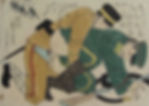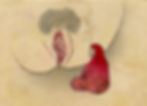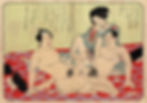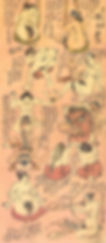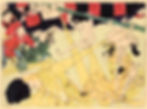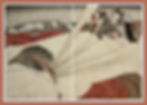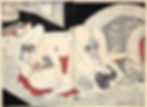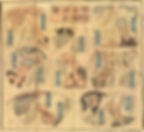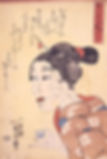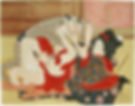Shunga (春画) - Japanese Erotic Art
- PleaseKnock
- Oct 22, 2021
- 2 min read
Updated: Feb 26, 2023
In Japan, Shunga (春画) means spring, or spring picture - a popular euphemism for sex. Typically executed as a kind of ukiyo-e, often in woodblock print format, Shunga were produced between the sixteenth and nineteenth centuries as singles, books (enpon) and scrolls.


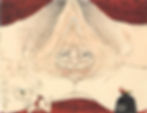
It's sexually explicit. And for a country that comes across to foreigners as conservative, it's very boldly done. The odd bit is that this once flourishing art form was suppressed in the 18th century, when Japan opened up to the West and the country went through a period of accelerated modernisation.
That's a pity, of course. Censorship serves no purpose other than to limit the human experience. And Shunga had practical uses. Legend has it that Japanese brides were gifted Shunga books as part of their pre-wedding package.
But Shunga in Japan wasn't ever really all that didactic, as it was in China, where the art form was born. Japan's artists were not overly concerned with anatomical accuracy. The phallus and vulva depicted in Shunga are often massive, truly huge, cavernous and elephantine. Some have their own Zip code. Public hair is measured by the yard. Bodies are contorted in pleasure, legs and arms in sinew stretching positions to better display those drive-in vaginas and tree trunk penises. There's no little humor in these pictures, which elevates Shunga from the fetishistic and troubling to the fun and enlightening. This was art for sharing, for enjoying, and mocking the prudes, priests and princes.
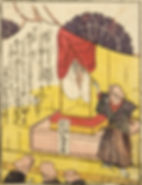
And that's when you notice that the subjects are all having a great time. Everyone seems to be smiling. This is The Joy of Shunga. Naked women run carefree. Men languish in groups, heads resting on their oversized bellends as they shoot the breeze and give one another the come on. The two octopi exploring a woman's every nook and cranny in Hokusai's 1814 work Dream of the Fisherman's Wife are wide-eyed with delight, while she writhes in ecstasy. Shunga has something for everyone.
And those Western barbarians who were thought too modern to appreciate shunga's passions now love it. A 2013 exhibition at the venerable British Museum featured the usual sauciness, plus a skinhead nun shagging a priest hidden sat inside a large bag, a group of men in a "phallic competition", their giant knobs serving as tables and cushions, and an ejaculating adolescent watching two happy copulating turtles. The show included works from the museum's Secretum – a collection created officially in 1865 to store all historical items deemed to be obscene, accessible only by the trusted for 'research purposes'. Let me in, you cry.
The exhibition's curator, Timothy Clark, Shunga, told us that Shunga "celebrates the pleasures of lovemaking, in beautiful pictures that present mutual attraction and sexual desire as natural and unaffected". Which makes you wonder why it was on alt open to over-16s. As a cartoon in a British newspaper of two women talking put it: "Apparently men think about Japanese art nineteen times a day."

